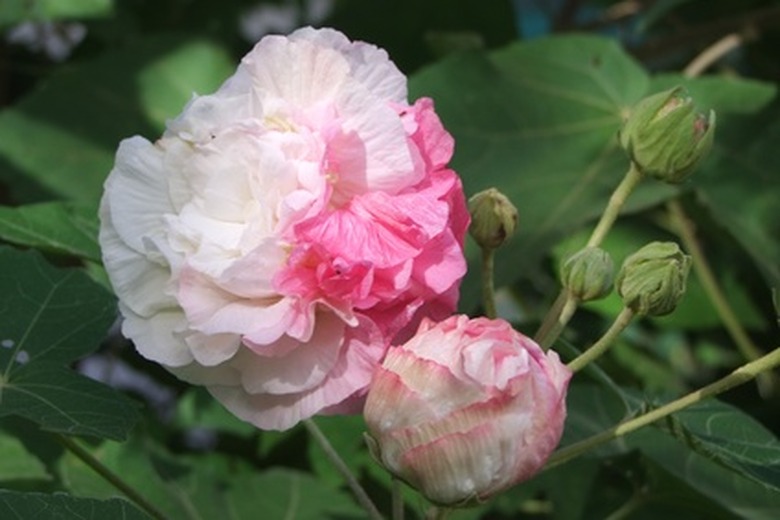Problems Raising Rose Of Sharon Bushes
Rose of Sharon is a beautiful flowering bush most prized for its height. Rose of Sharon grows flowering stalks that can be as tall as 8 to 12 feet. The blooms range in color from shades of pink and purple to white. This plant is an excellent addition to any landscape, but it is prone to some problems.
Flower Bud Drop
Rose of Sharon can sometimes prove to be a later bloomer. Early spring may come and go, with other plants budding and blooming and your Rose of Sharon remaining dormant. Once the bush does begin to bud, you may find that the buds have all fallen off. This is called flower bud drop. It is the result of inconsistent soil moisture. Rose of Sharon's sensitivity to moist-then-dry soil makes moisture retentive soil a must. Remedy this problem by adding a soil amendment like Zeba Quench. This all-natural soil amendment adjusts moisture retention in the soil and improves water supply to the bush. Adding in a 3-inch layer of mulch will also help curtail this problem by reducing evaporation and maintaining a cooler soil temperature.
- Rose of Sharon is a beautiful flowering bush most prized for its height.
Bending Branches
Another problem that you might encounter when raising a Rose of Sharon bush is bending branches. This happens when the branches bend over from the weight of the flowers. The branches become too leggy and the canopy becomes too top heavy. Prevent this problem by pruning the bush in the winter or early spring. If the ideal time for pruning has already passed and you encounter this problem, consider foregoing blooms for the season and go ahead and prune. The plant will come back next season without the droopiness.
Leaf Spot and Leaf Rust
If circular spots appear on the leaves of your Rose of Sharon, leaf spot is the likely culprit. This fungal disease causes distortion of the leaves and defoliation, or leaf drop. By the time leaf spots appear on the plant leaves, it is too late to apply a chemical treatment. Prevention is the best medicine here; apply a fungicide when the leaf buds first appear, then again in seven to 14 days. Any shrub fungicide will do the trick, just follow the label directions. Since leaf spot fungi thrive in the cool, wet weather of the early growing season, this problem seldom arises once the warmer, dryer weather arrives. Leaf rust fungus produces powdery residue, typically on the undersides of leaves. It ranges in color and may appear in shades of yellow, orange, brown, and even purple. As in leaf spot, leaf rust can also cause distortion of the leaves and defoliation. If you spot leaf rust, remove any affected leaves and get rid of any fallen leaf debris. Leaf spot and rust can cause your Rose of Sharon to look unsightly, but they rarely cause any serious damage.
- Another problem that you might encounter when raising a Rose of Sharon bush is bending branches.
- As in leaf spot, leaf rust can also cause distortion of the leaves and defoliation.
